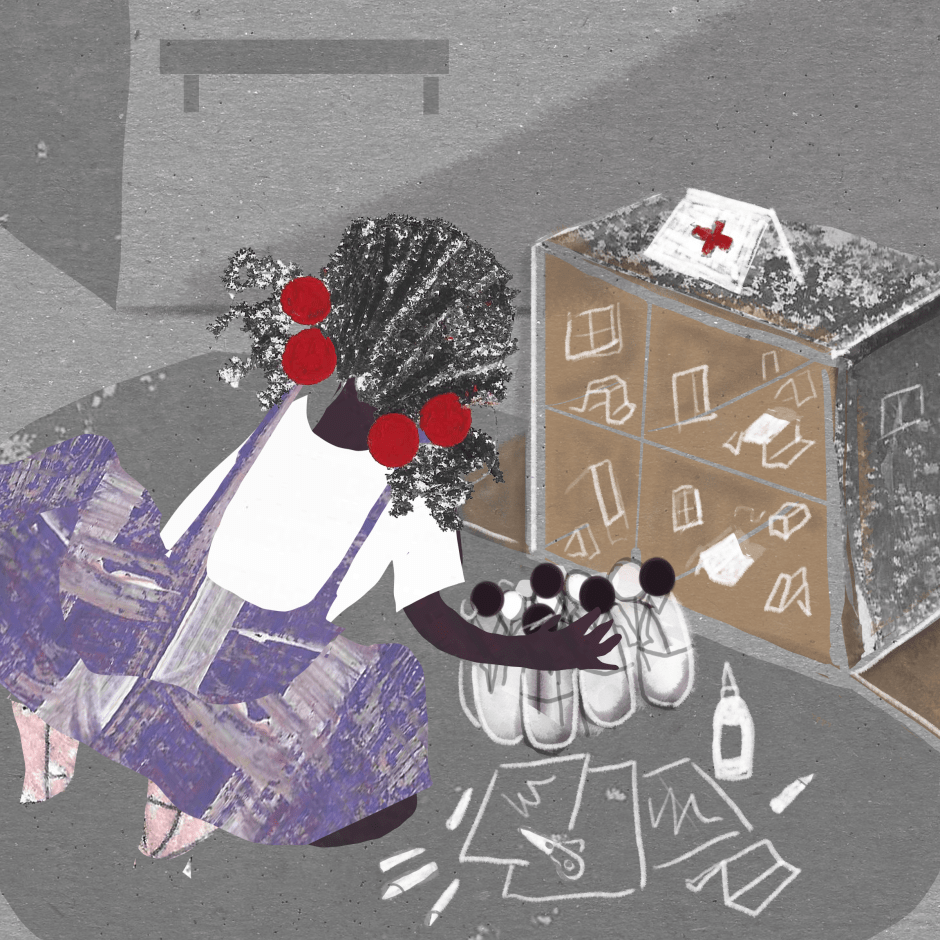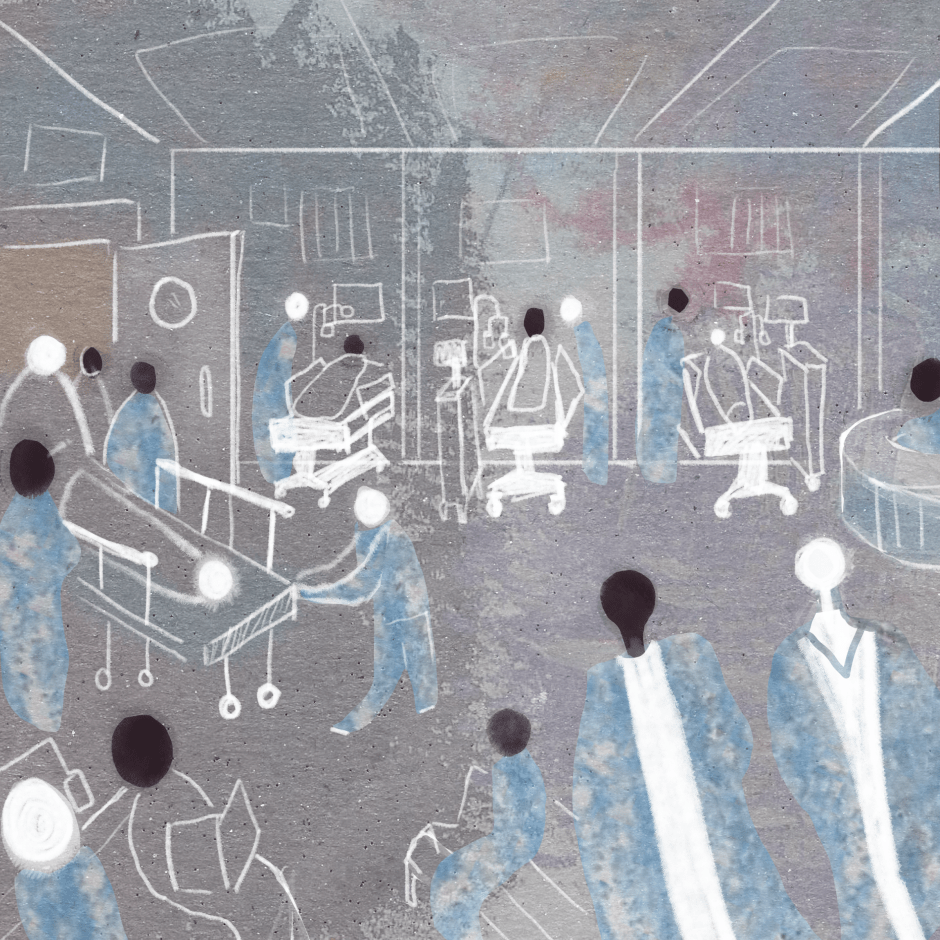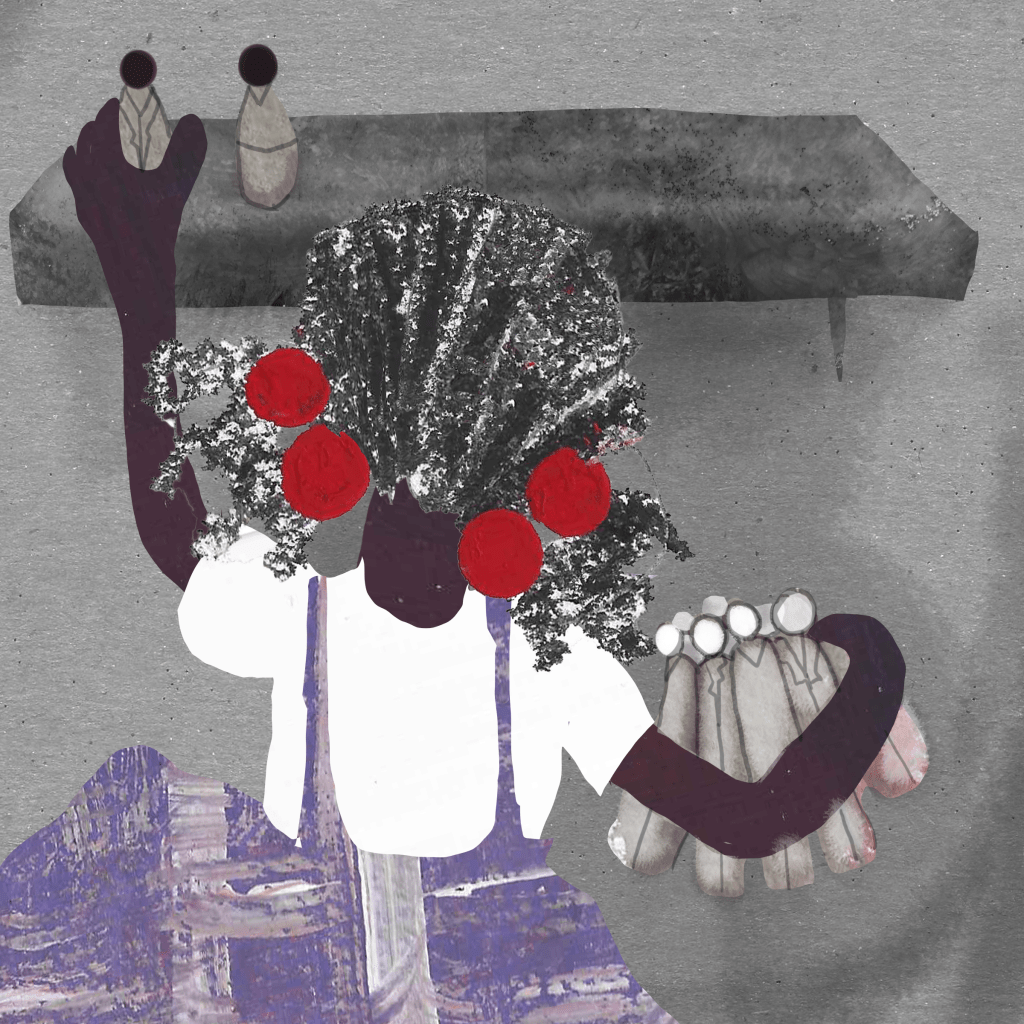COMMENTARY
By LLana James, Sally Abudiab, & Samira Said Omar
Important discussions about racialization, racism, and their intersections have largely been absent in rehabilitation sciences in Canada, even though colonization and racialization have redefined the world since the sixteenth century (1-4). Racialization is a short-hand term for racialized systems and processes that structure social relationships. This means that material (e.g., economic) opportunities, health services, access, and social (non)mobility, are organized and differentially accessible based on long-standing, pernicious, yet invalidated racial taxonomies (5) across the globe (1,6) and in Canada specifically (7-12).
Interpersonal experiences of racialization and racism, be it overt violence resulting in fatal outcomes and/or micro aggression that intersect with other aspects of identity, social position, and processes, may result in poor rehabilitation outcomes. Consequently, exclusionary practices, such as anti-Blackness, anti-Indigeneity, and the privileging of Whiteness, occur in rehabilitation science, education, training, practice, literature, and theorizing. This commentary illustrates the current shortcomings in rehabilitation: (a) the absenting of the role and impact of racialization, and (b) the impact of racism in rehabilitation science, research, and clinical care.

An Analogy of Race and Disability in Rehabilitation
Although rehabilitation science literature uses terms such as critical research, criticality, and critical perspectives, there has been a circumvention of the primacy of racialization and its intersections as a central organizing factor across and within systems globally (1,6,13,14). For example, in Rethinking Rehabilitation Theory and Practice (15), Stone and Papadimitriou relay to readers that traumatic spinal cord injury (TSCI) is a life-changing event that shifts how one is perceived by oneself and by others; supports and services are needed beyond addressing physical changes, where rehabilitation is defined by the authors as “re-having oneself, … reconnecting with one’s possibilities for existing as a human being, in both a temporal and embodied way.” (15)
Stone and Papadimitriou juxtapose White maleness to Black femaleness in a racialized analogy to explain “the ways in which … transformations are mirrored in the case of individuals with TSCI.” (15) The loss of power, privilege, and social position following a TSCI is likened to the radical downshift a White, able-bodied male would experience if he were abruptly re-cast and re-embodied as a Black, able-bodied female.
Intersectionality, not Analogies
The analogy above is flawed, as it does not consider the naturalization of Whiteness, nor the intersections of racialization, disAbility, and gender (16,17). The analogy surfaces an important issue in rehabilitation – that racialization and racism are obfuscated, present yet opaque in rehabilitation science literature. Furthermore, Stone and Papadimitriou’s analogy marginalizes the experiences of Black women that do and do not live with a disAbility, such as a TSCI.
An intersectional analysis illuminates how racialization, racism, and ableism interact to produce further inequality (18). Intersectionality, a prominent research and theoretical paradigm introduced by legal scholar Kimberle Crenshaw (19,20), is a tool for illuminating the discriminatory experiences of living at the intersections of race, gender, and sex.

From Pre- to Post-Criticality: Considerations and Assumptions
Although there is epidemiological evidence that racism is a determinant of health (21,22), critical and post-critical texts (15,23) in rehabilitation sciences invoke, but do not engage with, the role of racialization and racism as such (24). One approach to criticality is the questioning of assumptions in rehabilitation research and practice (25); however, there remains a lack of responsiveness to the impact of racialization and racism and other points of intersection when discussing rehabilitation and disAbility.
This lack of responsiveness raises some difficult questions: How are the impacts of racialization and racism on populations and individuals addressed in rehabilitation education, training, research, and literature? Does being White with a disAbility and of a certain socioeconomic status (SES) result in the same rehabilitation and recovery experiences and outcomes as Black and Indigenous people and communities in Canada?
Questioning long-held assumptions means questioning the implicit yet binding structures of oppressive systems. Once we acknowledge that matters of racialization, racism and disAbility have important social dimensions that intersect, we can begin to address health inequities.
Specifically, Canada must address the central health inequities commonly experienced by Black and Indigenous populations, people of colour, and others who experience marginalization (26).
Canada’s History and The Health Consequences We Face Today
We cannot have a contemporary discussion about health inequity without understanding our history. The long-lasting health effects of slavery and colonization are still evident in Canada (2,3,11,12,27). The United Nations’ Report of the Working Group of Experts on People of African Descent on its mission to Canada released in 2017 reports pervasive systemic, anti-Black racism, and multiple intersecting forms of discrimination (28). The report identifies that structures and systems must be reformed and transformed in order to support equity for people of African descent in all aspects of life in Canada (28). The Working Group found that:
“…despite Canada’s reputation for promoting multiculturalism and diversity and the positive measures taken to address racial discrimination, the Working Group is deeply concerned about the human rights situation of African Canadians…This contemporary form of racism replicates the historical de jure and de facto substantive conditions and effects of spatial segregation, economic disadvantage and social exclusion.” (28)
In a seminal report called First Peoples, Second Class Treatment: The role of racism in the health and well-being of Indigenous peoples in Canada, the authors report that “racism and colonization are intertwined,” and “everyone agrees that there is one critical social determinant of health, the effect of colonization.” (11) This report urgently calls for reframing the conversation around race and health in Canada by acknowledging the foundational and ongoing realities of racism and colonialism. Indeed, the history of Canada rests upon the colonization of Indigenous people (9,10,11) such that the oppressive consequences persist to this day with ongoing attempts to deny their right to self-determination (8).
The Truth and Reconciliation Commission (TRC) exposed the truth about the Canadian government’s central role as the architect and contractor of suffering, death, and horrific violence on generations of Indigenous children, who were subjected to horrific injustices such as breaking apart traditions and families. Reclaiming Power and Place: National Inquiry into Missing and Murdered Indigenous Women and Girls (Volume 2) (29) exposes yet another aspect of the systemic and ongoing nature of colonization. The TRC has 94 calls to action in areas such as health, education, culture, and language with explicit consideration for creating awareness for change and opportunities for education.
We mention these reports to remind readers that Canada has a duty to actively combat injustices against Indigenous peoples (First Nations, Inuit, and Metis) and people of African descent, groups who experience unique, systemic, and enduring forms of racism.

From Exclusion to Systems-Based Transformation: Starting with Conscientization
The erasure of racialization and racism discussion in the field of rehabilitation sciences resembles the broader Canadian healthcare context, in which numerous reports document that racism is endemic (30-32). Facilitating deep structural change is of paramount importance and requires addressing racialization, racism, and intersecting forms of discrimination at the structural, community, and individual level. Rehabilitation clinicians and scientists, healthcare leaders, policy makers, staff, and trainees must educate themselves about their role in mitigating and ending racialization and racism in rehabilitation education, training, practice, and research.
A starting point is to develop critical consciousness (33). Kumagai and Lypson contend that, “the development of critical consciousness involves a reflective awareness of the differences in power and privilege and the inequities that are embedded in social relationships…and the fostering of a reorientation of perspective towards a commitment to social justice.” (34) However, decolonization, disrupting settlerism (37,38), applying a critical disability lens (16), and decentering White fragility must be at the core of critical consciousness development (17), given the powerful forces and impacts of structural racism.
Despite structural challenges, there is great promise in community self-determination within healthcare, especially rehabilitation.
For example, research conceptualized, led, and implemented by the affected communities can be a tool for facilitating policy reform and social transformation. Supporting self-determination initiatives (e.g., to end policies and practices that are anti-Black and anti-Indigenous) empowers equitable collaboration and the development and maintenance of sustainable interventions.
Closing Remarks
The call for systemic change requires enough resources and enforceable policy changes at federal, provincial, municipal, and institutional levels that end anti-Blackness and anti-Indigeneity, as well as other forms of discrimination. Transformative, systemic change is a shared responsibility. Strategies, wise practices, and critical theories are needed for identifying, implementing, and evaluating appropriate systems-based change.
Critical race theory (35,36) and intersectionality (19,20,24) are valuable tools that can assist rehabilitation scientists, clinicians, and other stakeholders with implementing meaningful systemic change. Implementing such change can destabilize, stop, and prevent the embodiment of oppressive structural forces, such as anti-Blackness and anti-Indigeneity on health, wellness, and rehabilitation (39,40). Doing so will directly benefit the health and wellness of populations indigenous to Turtle Island (Canada) such as First Nations, Inuit, and Metis people; Black people; and other racialized populations and marginalized people/communities living at the intersections of oppression and exclusion.
Acknowledgment
Featured illustration by Daniela Casas for rehabINK.
To refer to this article, it can be cited as:
James L, Abudiab S, Omar S. Racialization and Racism: Uncovering the Implicit in Rehabilitation Sciences and Research. rehabINK. 2019;7. Available from: https://rehabinkmag.com
References
- Lowe L. The intimacies of four continents. Durham: Duke University Press; 2015.
- Cooper A. The invisible history of the slave trade [Internet]. The Toronto Star; 2007 March 25 [cited 2019 May 27]. Available from: https://www.thestar.com/opinion/2007/03/25/the_invisible_history_of_the_slave_trade.html
- Mensah J. Black Canadians: history, experiences, social conditions. Black Point, N.S.: Fernwood Pub.; 2010.
- James CLR. The Black Jacobins: Toussaint L’Ouverture and the San Domingo Revolution. Penguin UK; 2001 May 31.
- Desalle R, Tattersall I. Race is not a genomic phenomenon [Internet]. The Scientist Magazine®. [cited 2019 Jun 4]. Available from: https://www.the-scientist.com/reading-frames/race-is-not-a-genomic-phenomenon-64266
- Browne S. Dark matters: on the surveillance of blackness. Durham: Duke University Press; 2015.
- Trudel M, Tombs G. Canada’s forgotten slaves: two centuries of bondage. Montréal, Québec, Canada: Véhicule Press; 2013.
- Daschuk JW. Clearing the Plains: disease, politics of starvation, and the loss of Indigenous life. Regina, Saskatchewan: University of Regina Press; 2019.
- Geddes G. Medicine unbundled: a journey through the minefields of indigenous health care. Victoria: Heritage; 2017.
- Lux MK. Separate beds: a history of Indian hospitals in Canada, 1920s-1980s. Toronto: University of Toronto Press; 2016
- Allan, B. & Smylie, J. (2015). First Peoples, second class treatment: The role of racism in the health and well-being of Indigenous peoples in Canada. Toronto, ON: The Wellesley Institute.
- Maynard R. Policing black lives: State violence in Canada from slavery to the present. Halifax: Fernwood Publishing; 2017.
- Thobani S. Exalted subjects: studies in the making of race and national in Canada. Toronto: University of Toronto Press; 2012.
- Razack S. Race, space, and the law unmapping a white settler society. Brantford, Ontario: W. Ross MacDonald School Resource Services Library; 2017.
- McPherson K, Gibson BE, Leplège Alain. Rethinking rehabilitation: theory and practice. Boca Raton: CRC Press, Taylor & Francis Group; 2015.
- Annamma SA, Ferri BA, Connor DJ. Disability Critical Race Theory: Exploring the Intersectional Lineage, Emergence, and Potential Futures of DisCrit in Education. Review of Research in Education. 2018;42(1):46–71.
- DiAngelo RJ. White fragility: why it’s so hard for white people to talk about racism. London: Allen Lane; 2019.
- Frederick A, Shifrer D. Race and Disability: From Analogy to Intersectionality. Sociology of Race and Ethnicity. 2018;5(2):200–214.
- Crenshaw K. Mapping the Margins: Intersectionality, Identity Politics, and Violence against Women of Color. Stanford Law Review. 1991;43(6):1241.
- Crenshaw K. Demarginalizing the Intersection of Race and Sex: A Black Feminist Critique of Antidiscrimination Doctrine, Feminist Theory, and Antiracist Politics [1989]. Feminist Legal Theory. 2018;:57–80.
- Mitchell L. Racism: The Missing Social Determinant of Health. Racism: The Missing Social Determinant of Health. Available from: http://www.dlsph.utoronto.ca/2017/02/racism-the-missing-social-determinant-of-health/
- Paradies Y, Priest N, Ben J, Truong M, Gupta A, Pieterse A, et al. Racism as a determinant of health: a protocol for conducting a systematic review and meta-analysis. Systematic Reviews. 2013;2(1).
- Gibson B. Rehabilitation: A post-critical approach. CRC Press; 2016 Jan 6.
- Bauer GR. Incorporating intersectionality theory into population health research methodology: Challenges and the potential to advance health equity. Social Science & Medicine. 2014;110:10–17.
- Gibson B. Critical Rehabilitation Research: Why it matters for all research. rehabINK, October. 2016;1:6-8. Available from: https://rehabinkmag.com/previous-issues/rehabink-fall-2016-volume-1-issue-2/critical-rehabilitation-research-why-it-matters-for-all-research/
- Racial inequality in access to health care services [Internet]. Ontario Human Rights Commission. Available from: http://www.ohrc.on.ca/en/race-policy-dialogue-papers/racial-inequality-access-health-care-services
- Boyer Y. Healing racism in Canadian health care. Canadian Medical Association Journal. 2017;189(46).
- UN Human Rights Council. Report of the Working Group of Experts on People of African Descent on its mission to Canada, A/HRC/36/60/Add.1 (16 August 2017), Available from: https://www.refworld.org/docid/59c3a5ff4.html
- Z L. Final Report [Internet]. National Inquiry into Missing and Murdered Indigenous Women and Girls. 2019. Available from: https://www.mmiwg-ffada.ca/final-report/
- Racism and Public Health [Internet]. Canadian Public Health Association | Association Canadienne de Santé Publique. Available from: https://www.cpha.ca/racism-and-public-health
- Galabuzi G-E. Canadas economic apartheid: the social exclusion of racialized groups in the new century. Toronto: Canadian Scholars Press; 2006
- Nestel S. Colour coded health care: the impact of race and racism on Canadians’ health. Toronto, ON: Wellesley Institute; 2012. Available from: http://www.wellesleyinstitute.com/health-care/colour-coded-health-care-the-impact-of-race-and-racism-on-canadians-health/
- Freire P. Pedagogy of the oppressed: 20th anniversary edition. New York: Continuum; 1993
- Kumagai AK, Lypson ML. Beyond Cultural Competence: Critical Consciousness, Social Justice, and Multicultural Education. Academic Medicine. 2009;84(6):782–787.
- Bonilla-Silva E. Rethinking Racism: Toward a Structural Interpretation. American Sociological Review. 1997;62(3):465.
- Delgado R, Stefancic J, Harris AP. Critical race theory: an introduction. New York: New York University Press; 2017.
- Vowel C. Indigenous writes a guide to First Nations, Métis, and Inuit issues in Canada. Brantford, Ontario: W. Ross MacDonald School Resource Services Library; 2018.
- Lawrence B. Real Indians and Others Mixed-Blood Urban Native Peoples and Indigenous Nationhood. Lincoln: University of Nebraska; 2014.
- Government of Canada. Truth and Reconciliation Commission of Canada [Internet]. 2019. Available from: https://www.rcaanccirnac.gc.ca/eng/1450124405592/1529106060525
- International Decade for People of African Descent [Internet]. United Nations. United Nations. Available from: https://www.un.org/en/events/africandescentdecade/

